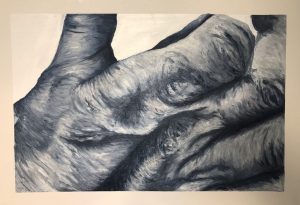RILEY, B. (1989) The Artist’s Eye, London.
The Artist’s Eye, is a conversation between Bridget Riley, a London based English painter, and Robert Kudielka, a German art historian, discussing a collection of paintings selected by Bridget Riley to be put into the National Gallery. Riley has chosen works by artists such as Titian, Veronese, El Greco, Rubens, Poussin and Cezanne. Riley talks passionately about each painting, going into great depth about their compositions, narratives, choice of colour and the artists painting process. Alongside the text of the conversation are copies of several of the art pieces they are discussing, allowing the reader to understand and see the specific points they talk about.
In particular, Riley discusses Titian’s painting ‘Bacchus and Ariadne’ (1520-22); she starts with discussing the idea of using colour as an element of construction when it comes to painting. The idea that colour can change the painting and how it is viewed. The feature that makes this painting worthy to Riley to be put into the National Gallery is the use of such a strong blue colour, which was a risk for a painter in that time, and how he has manipulated the rest of the painting to compliment this colour choice. “He uses the complex narrative to balance the blues.” – Riley. In regards to this painting, Riley explores Titian’s process and intentions when it came to this painting, for example, the idea that he was constantly thinking about the subtle pairings and narrative that can be found in the painting, and how they can affect the final painting. “He works through an intuitive logic of oppositions, distinguishing and simultaneously relating every inch of the canvas in a continuous web of contrasts, echoes, reversals, repetitions and inversions without either trying to form a unifying envelope or depending upon any simple common principle.”- Riley

